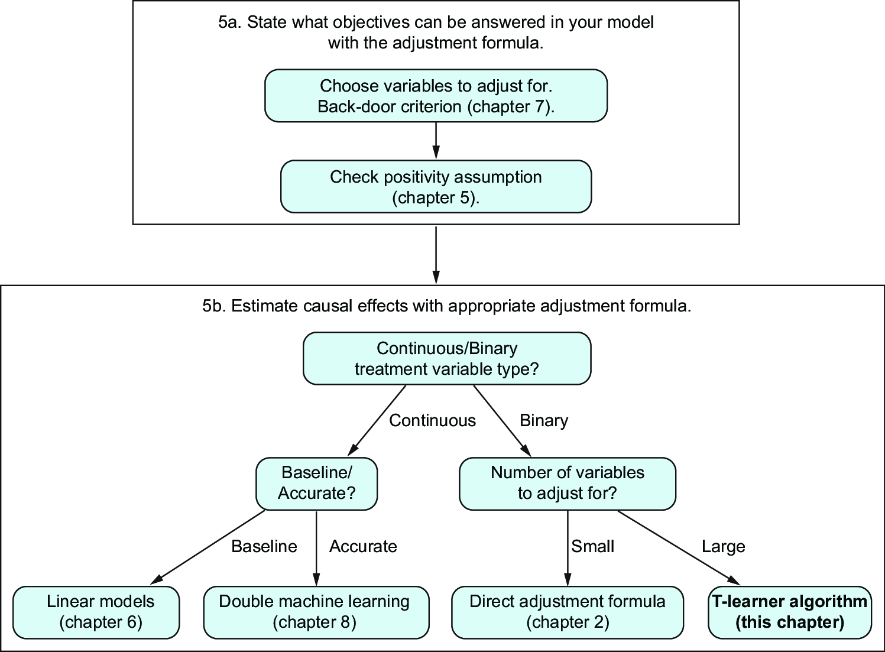4 How machine learning and causal inference can help each other
This chapter covers
- What we are estimating when we use machine learning models
- When to use causal inference and when to use machine learning
- Using machine learning models in the adjustment formula
In recent years, machine learning has experienced explosive growth across various domains, revolutionizing fields like image recognition, language translation, and autonomous vehicles. These advancements have been remarkable, often giving the impression that machine learning is the ultimate solution to replicate human intelligence. However, like any tool, machine learning has its limitations. As we’ll explore in this chapter, one notable limitation is its struggle to effectively handle causality. AI must incorporate causal inference techniques alongside machine learning methods to unlock its full potential.
Supervised learning, the most prevalent form of machine learning, focuses on making predictions based on historical data. It aims to create predictive models to anticipate outcomes (y) given input variables (x). These models are commonly used for forecasting, such as predicting future sales, or for automating tasks, such as identifying spam emails. In supervised learning, the emphasis is on accurate predictions, often leading to models perceived as black boxes, as we’re generally less concerned about how they arrive at their predictions.
